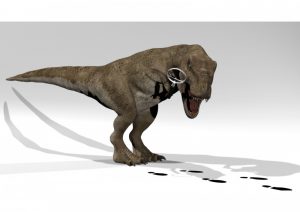What do dinosaurs and the fossil footprints of our ancient human ancestors have to do with catching criminals?
Researchers at Bournemouth University have travelled the world over the last few years documenting fossil footprints both of humans and extinct animals. We read the story in the traces left in the rock record, to tell the story of how different animals interacted, how they walked and behaved. We have developed freeware to help capture these traces in 3D and analyse them using some cool mathematical techniques including machine learning. Recently we have shown how our American ancestors hunted giant ground sloth, and how patterns of human locomotion have changed as our ancestors in Africa evolved. Take this know-how, the mathematical tools and computer software we have developed to translate our research into forensic practice, and you have modern tools for the police to track criminals via their footprints.
Want to find out more? Come and see us at New Scientist Live 10-13 Oct 2019 ExCeL, London. Stand 524.

 New Research Collaboration between Bournemouth University and La Trobe University, Melbourne, Australia
New Research Collaboration between Bournemouth University and La Trobe University, Melbourne, Australia










 BU academic publishes in online newspaper in Nepal
BU academic publishes in online newspaper in Nepal Final day of the ESRC Festival of Social Science
Final day of the ESRC Festival of Social Science Using Art to enhance Research
Using Art to enhance Research Register now to attend the 17th Annual Postgraduate Research Conference – Wednesday 3 December 2025
Register now to attend the 17th Annual Postgraduate Research Conference – Wednesday 3 December 2025 ECR Funding Open Call: Research Culture & Community Grant – Application Deadline Friday 12 December
ECR Funding Open Call: Research Culture & Community Grant – Application Deadline Friday 12 December MSCA Postdoctoral Fellowships 2025 Call
MSCA Postdoctoral Fellowships 2025 Call ERC Advanced Grant 2025 Webinar
ERC Advanced Grant 2025 Webinar Horizon Europe Work Programme 2025 Published
Horizon Europe Work Programme 2025 Published Horizon Europe 2025 Work Programme pre-Published
Horizon Europe 2025 Work Programme pre-Published Update on UKRO services
Update on UKRO services European research project exploring use of ‘virtual twins’ to better manage metabolic associated fatty liver disease
European research project exploring use of ‘virtual twins’ to better manage metabolic associated fatty liver disease